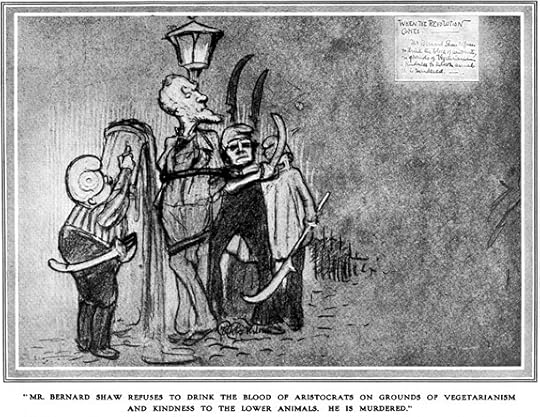Carl E. Olson's Blog, page 123
November 8, 2013
Universal Truths: A Review of "12 Years a Slave"
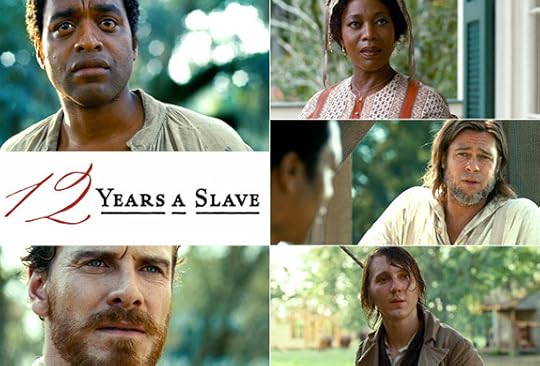
Universal Truths: A Review of "12 Years a Slave" | Nick Olszyk | Catholic World Report
Although legal slavery has long been abolished in the U.S., we are still dealing with violations of universal truths
MPAA Rating, R
USCCB Rating, NA
Reel Rating:



 (4 Reels out of 5)
(4 Reels out of 5)Oppression and unjust suffering are universal experiences of the world of sin that represents this fallen age, but it is a universal truth that “all men are created equal, that they are endowed by their Creator with inalienable rights.” 12 Years a Slave demonstrates how imperfectly the United States has, unfortunately, implemented this truth throughout its history. This oppression breeds hate and sin that permeate even the purest of men. Yet despite generations of seemingly endless persecution, hope and salvation always come, sometimes in sudden and serendipitous ways. 12 Years is one of the best films about American slavery because it is helmed by Steve McQueen, who has the uncanny ability to portray the reality of sin in graphical detail without losing human dignity or glorifying evil. It is a harrowing experience that reminds us that “the light shines in the darkness, and the darkness has not overcome it.”
Solomon Northup (Chiwetel Ejiofor) is an average family man living in middle-class New York. The troubles of 1840s America seem far, far away until he is kidnapped and sold into slavery. He is brutally tortured until he accepts not only his unjust situation but a new identity as Platt Hamilton, a slave born and raised in the deep South. He is first bought by William Ford (Benedict Cumberbatch, in one of six performances this year alone), who is as good a man as a plantation owner could be, even protecting Northup when he fights back against a malicious overseer (Paul Dano).
Northup survives but is sold to the ruthless Edwin Epps (McQueen favorite Michael Fassbender) who makes the lives of his slaves a perpetual nightmare.
November 7, 2013
The Fortunate Faith of Audrey Assad
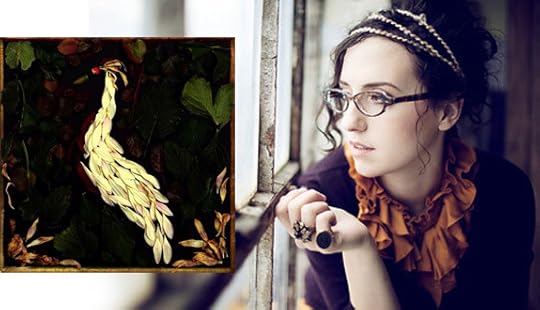
The Fortunate Faith of Audrey Assad | Carl E. Olson | Catholic World Report
The singer-songwriter discusses her new album, faith, conversion, and why she doesn't make “Christian music”
Audrey Assad (www.audreyassad.com) is a thirty-year-old singer, pianist, and songwriter who has steadily established herself in recent years as an exceptional musical artist with a gift for deeply spiritual lyrics and memorable melodies.
Assad was raised in a Protestant home in New Jersey, then moved with her family to Florida in her late teens where she began to study and learn more about Catholicism. She entered the Church in 2007. Her first album, The House You’re Building (2010), was recognized on Amazon.com as Christian Album of the Year and by iTunes as Christian Breakthrough Album of the Year. Her second album, Heart (2012), was critically acclaimed and reached #3 on the Billboard Christian Albums chart. The lyrics in those albums revealed the influence of St. Augustine, the Jesuit poet and priest Gerald Manley Hopkins, and the poet Francis Thompson.
Her new, self-produced album, Fortunate Fall, was released this past August.
Assad recently answered some questions from Carl E. Olson, editor of Catholic World Report, about her music, her decision to become Catholic, the influence of Augustine on her writing, and why Catholic artists need to pursue beauty and truth, no matter the cost.
CWR: Your first two studio albums, The House You're Building and Heart contained many songs oriented toward worship, but your new album, Fortunate Fall, is focused entirely on music to be used in personal devotion and public worship. What inspired you to pursue making such an album? How do you envision your music being used in liturgy and in private prayer?
Assad: After making my first two albums (and after a few years in the music business) I found myself at a personal crossroads: I asked myself what, as a Catholic, I should be doing in the world—and how I should be making music. In that period of discernment I came to the conclusion that there is no room in my artist’s heart for making “Christian pop” — less still for making what has come to be known as “Contemporary Christian music.” In these phrases, the word “Christian” is a modifier, not a noun—essentially, it’s become a marketing term. I don’t believe that’s how the word should be used. So going forward, I don’t make “Christian music”, even when it’s intended for the Church. I make Church music, and that’s what Fortunate Fall is.
As you stated, the music on Fortunate Fall is intended for personal devotion and public worship. I envision it being incorporated into anything from prayer time in the car on the way to work to Adoration and even, in some cases, Mass -- based on the Church’s guidelines, we did our best to notate appropriate usages in the liner notes. Hopefully that’s helpful to those who pick up a physical copy!
CWR: The influence of St. Augustine is front and center, from the title of the album to the lyrics of many of the songs. When did you first discover Augustine and how has he affected you as a person and an artist?
Assad: I discovered St. Augustine as I was on my way into the Catholic Church—I was confirmed in 2007. In the two years of study I did before coming into the Church, St. Augustine was a steady and pulsing voice in my reading. Though he and C. S. Lewis are different, I think they share this similarity, and thus share a large amount of influence in my work: they both think like philosophers and write like poets. I can’t compare myself to either of them, but they inspire me in that way, and in that way I hope to be as like them as possible.
CWR: Three themes stand out upon repeated listens: the Incarnation, redemption, and abandonment to God's will. What are some of the key connections you see among the three? What other themes were central to the writing and making of the album?
November 6, 2013
Watch in-depth interview with actress Alissa Jung ("Mary of Nazareth")
For more about the film, visit www.MaryFilm.com. Here is the trailer for the film:
Chesterton the Cartoonist, on "When the Revolution Comes"
When the Revolution Comes | John B. Buescher | CWR blog
Did you know that G. K. Chesterton was
not only an essayist, novelist,
raconteur, and possibly a saint, but
also a cartoonist as well?
In 1911, as he was publishing his
Father Brown stories and just before his intermittent debating
opponent George Bernard Shaw would write, Pygmalion, the
London magazine, The Sketch, published a series of
Chesterton’s cartoons, all on the theme of “When the Revolution
Comes.” Here’s a selection of three of them, illustrating his
humor, as well as his unerring ability to find the absurd nub of the
radical Progressivist cause.
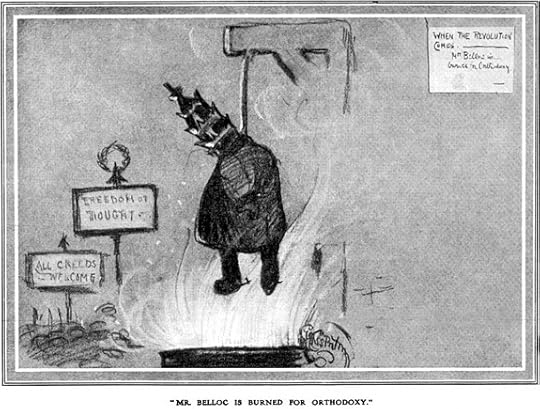
Chesterton’s friend and fellow
writer, Hilaire Belloc, of course, often confronted Leftists with
what would, in our day, come to be known as “hatefacts.”
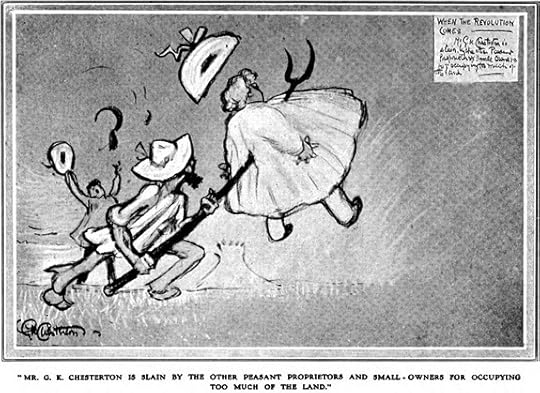
Chesterton here
is making fun of his own avoirdupois. However, under nationalized
medicine, unhealthy activity, like smoking cigars or carrying excess
weight, is positively anti-social and counter-revolutionary.
Shaw, Chesterton’s antagonist, the
great socialist Progessive, is here hoist on his own petard, as one
who refuses to stoop to the ritual of solidarity with the People.
A Catholic Politician in the Nordic Public Square
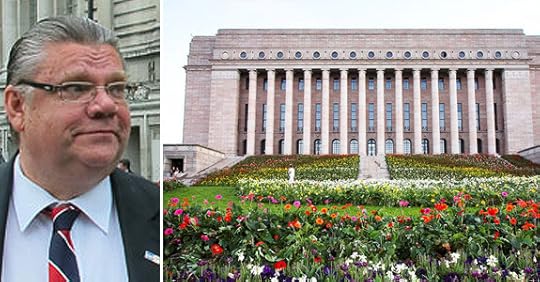
Left:
Timo Soini, leader of the Finns Party (photo: http://timosoini.fi/).
Right: Parliament of Finland (photo: http://en.wikipedia.org/).
A
Catholic Politician in the Nordic Public Square |
Alberto
Carosa | CWR
An
interview with Finnish politician Timo Soini, leader of the main
opposition party in the Finnish parliament
Timo
Soini is an interesting and somewhat unusual figure in Finland’s
political establishment: a Catholic who is not hiding his Catholic
faith while living in a highly secularized society, nor mincing his
words whenever he needs to uphold “non-negotiable values”
relating to family, marriage, and life.
Soini
is
the driving force behind the exceptional surge of the
Perussuomalaiset
party
(in English, the “Finns Party” or “True Finn Party”), which
he has led since 1997. During the last general elections in April
2011, the Perussuomalaiset
party
won 39 seats (19.1%), a dramatic increase from their previous five.
The party's platform is based on “the right” for all members of
society “to a life of human dignity”, as expressed in the English
resume of the parliament’s official website.
“We are an
independent, nationally minded party that presents an alternative and
serves as a counterweight to non-criticism of the EU [European
Union]”, the resume goes on, “standing on a foundation of
Christian-social values”. Soini is a bit more specific in his
Finnish blog, stating that he needs “nobody’s permission to be
pro-life” and that “marriage should only be between a man and a
woman”. His party’s recent success has revolutionized Finland’s
political scenario, forcing an unusual alliance between the social
democrats and the traditional right-wing conservative Kokoomus
National Coalition Party seeking to keep Soini to be kept out of
government so the latter party can remain the leading opposition
party.
As a presidential candidate for the second time in the
January 2012 presidential elections, Soini received
the third most votes—almost 10% of the total. The unprecedented
result of this political “earthquake” was that the socialist
candidate was, for the first time, out of the run-off, causing the
editors of Helsingin
Sanomat,
the largest subscription newspaper in Finland, to declare, “Timo
Soini rewrote the electoral history books.”
Timo
Soini graciously granted the following interview to Catholic
World Report recently.
CWR:
What can you tell us about your recent visit to Rome?
Soini:
I was in Rome early this year, in April, and at the Vatican for the
ordination of priests. It was celebrated by Pope Francis, and I was
there with the Finnish Ambassador to the Holy See, Alpo Rusi. I also
met cardinals Turkson and Tauran. It was very interesting; it was a
real blessing that I could take that opportunity for a series of
discussions. It was my third visit to Rome. I went there with my
wife; we arrived on a Saturday and the following day we went to St
Peter’s Basilica for the mass celebrated by Pope Francis and then
returned home on Monday. We went to see the catacombs and to the
Vatican museums, and our Ambassador to the Vatican made it possible
for me to meet the two cardinals and then we went to the mass. Here
in Finland we are more ordinary people and it is a real sensation for
us to see so much luxury in terms of paintings and artistic
masterpieces. I also met a friend of mine, Oskar Juurikkala, who is
in Opus Dei and is studying to become a priest.
CWR:
What was your reaction at the changing of Popes?
November 5, 2013
New: "Daniel: Ignatius Catholic Study Bible" by Hahn and Mitch
Now available from Ignatius Press:
Daniel: Ignatius Catholic Study Bible: Commentary, Notes, & Study Questions
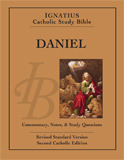
by Scott Hahn and Curtis Mitch
• Also available in Electronic Book Format
The 16th volume in the popular Bible study series leads readers through a
penetrating study of the Book of Daniel using the biblical text itself
and the Church's own guidelines for understanding the Bible.
Ample notes accompany each page, providing fresh insights by renowned
Bible teachers Scott Hahn and Curtis Mitch, as well as time-tested
interpretations from the Fathers of the Church. They provide rich
historical, cultural, geographical or theological information pertinent
to the Old Testament book - information that bridges the distance
between the biblical world and our own.
It also includes Topical Essays, Word Studies and Charts. The Topical
Essays explore the major themes of Daniel, often relating them to the
teachings of the Church. The Word Studies explain the background to
important Bible terms, while the Charts summarize crucial biblical
information "at a glance".
Scott Hahn, Ph.D., well-known as the author of several best-selling books including Rome Sweet Home and The Lambs Supper, is a professor of scripture at the Franciscan University of Steubenville, and a very popular scripture scholar and speaker.
Curtis Mitch, a former student of Scott Hahn, is the General Editor of the complete Ignatius Study Bible series.
Praise for Ignatius Catholic Study Bible:
"With copious historical and theological notes, incisive commentary and tools for study, the Ignatius Catholic Study Bible
is outstanding for private devotion, personal study and Bible study
groups. It is excellent for evangelization and apologetics as well!"
- Stephen Ray, Host, The Footprints of God series
"The Ignatius Study Bible is a triumph of both piety and scholarship, in
the best Catholic tradition: simply the most useful succinct commentary
that any Christian or other interested person could hope for."
- Erasmo Leiva, Author, Fire of Mercy, Heart of the Word
November 4, 2013
The Return of Christendom
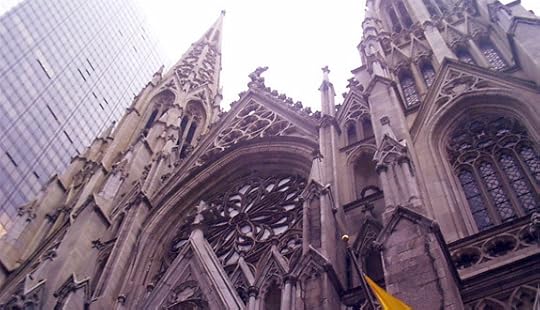
The Return of Christendom | James Kalb | Catholic World Report
Christendom may be gone as a matter of public law, but it’s still here as a substantive reality
Man
is a social being and doesn’t invent his own world. To orient
himself and understand what his life is about he has to find his
proper place, which is an order of things where he can feel at home
and to which he can give undivided allegiance.
To
deserve that allegiance the order of things must include ordinary
human connections but also transcend them, so that it supports all
things necessary for man’s well-being. Our ideal as Christians is
thus a social world that encompasses everyday life but is oriented
toward God and the good, beautiful, and true in all its aspects. In
our time the phrases “culture of life” and “civilization of
love” have been used to refer to basic aspects of such a world, but
Christendom seems the best name for it overall.
The
ideal is of course impossible to achieve perfectly in this world.
That would be the Kingdom of God on earth, which won’t be fully
with us until the Second Coming. Still, the Lord’s Prayer has to do
with the present as well as a future that may be very distant, so the
coming of the Kingdom and the realization of God’s will on earth
are with us even today. And in any event we must find some way to
live here and now. As social beings we must live with others, and as
Christians we must live with God, so the question of the connections,
loyalties, and obligations by which we should live always has some
sort of answer.
That
answer defines Christendom as it exists from time to time. It’s the
system of connections, loyalties, and obligations by which Christians
live, to the extent they are living as Christians, and to which they
owe their highest earthly allegiance. In one form or another it has
always been present in the lives of believers, in the Church, and in
social arrangements generally, in so far as they orient themselves
toward what is good, beautiful, and true.
Christendom
may be gone as a matter of public law, and perhaps in the
consciousness of most believers, but it’s still here as a
substantive reality.
November 2, 2013
Zacchaeus, the Silly Tree, and the Meaning of Life
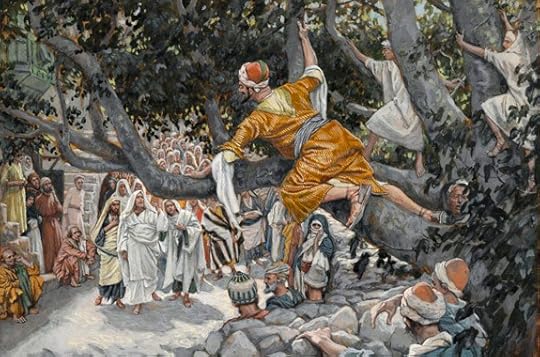
"Zacchaeus
in the Sycamore Awaiting the Passage of Jesus" (Zachée sur le sycomore
attendant le passage de Jésus) by James Tissot, late 1800s. (Brooklyn
Museum/Wikimedia Commons)
A Scriptural Reflection on the Readings for Sunday, November 3, 2013 | Carl E. Olson
Readings:
• Wis 11:22-12:2
• Ps 145:1-2, 8-9, 10-11, 13, 14
• 2 Thes 1:11-2:2
• Lk 19:1-10
“That’s a good question. I’ve
never really thought about it.”
The remark was made a number of years
ago by a forty-year-old relative who had been asked, “What do you
think is the meaning of life? Why are we here?” His honest answer
shocked me. After all, he was an intelligent and well-educated man;
surely he had pondered the mystery of his existence at some point in
his life!
Sadly, some people do not. Or at least
try not too. But most people, in some way or another, do ask the big
questions of life: Who am I? Why am I here? Why do I exist? The
author of the Book of Wisdom certainly pondered these questions. We
don’t know his name, but he was apparently a well-educated Jewish
author living in or around Alexandria, Egypt, between 50 to 180 years
prior to the birth of Jesus. He tackled big issues, including
exhorting fellow Jews to live holy lives, defending the existence of
a just and all-powerful God, and denouncing the materialism,
skepticism, and idolatry so prevalent among the pagans (and some
Jews) of his day. He was educated in Greek thought and rhetoric, and
he often used Hellenistic terms and ideas of defend his beliefs in a
Creator, providence, and divine judgment.
In today’s reading from the Book of
Wisdom, the author emphasizes two seemingly disparate qualities of
God: His omnipotence, or all-powerful nature, and His love for His
creation. On one hand the Lord is so great that all of creation is
but a fleck of dust or drop of water; on the other hand, He loves
everything that He has fashioned and He upholds it all by His loving
will. He is, the author writes, both Lord and “lover of souls.”
The author then makes a point that appears several times in the Book
of Wisdom: man’s disbelief in God is not a matter of intellectual
weakness as much as it is a matter of moral failure. Man is a
creature with a built-in need to worship someone or something. The
rejection of God means the acceptance of false gods. Even those
materialists who say there is no God or gods end up worshipping false
idols of one sort or another, including power, science, money, or
pleasure. Or even themselves.
In the face of a vast universe, what is
man’s response to his own existence? The author of the Book of
Wisdom says that humility, thanksgiving, and right living are the
only reasonable responses to the mystery of life. Likewise, the
Psalmist declares, “Let your works give you thanks, O Lord, and let
your faithful ones bless you.” The story of the chief tax collector
Zacchaeus and his encounter with Jesus, found only in Luke’s
Gospel, touches on similar themes.
Like the rich young ruler depicted
a chapter prior (Lk 18:18-23), Zacchaeus is rich and powerful. But as
a tax collector, who practiced a profession known for corruption and
injustice, it would have been difficult for Zacchaeus to claim that
he had kept the Law perfectly, as the rich young ruler had. Yet there
was something different about Zacchaeus, who “was seeking to see
who Jesus was.” The crowds, it seems, were there out of mere
curiosity, but Zacchaeus had a deep desire to truly understand and
know Jesus. And in seeking Jesus, this wealthy man had no qualms
about making a fool of himself in public.
“He ignored the crowd
that was getting in his way,” Augustine said in a sermon, “He
instead climbed a sycamore tree, a tree of ‘silly fruit’.”
After meeting Jesus, the tax collector promises to give generously to
the poor and to repay fourfold anyone he may have defrauded.
What is the meaning of life? The answer
is found when we acknowledge our Creator and seek the Savior. “Say
what you like,” said Augustine, “but for our part, let us climb
the sycamore tree and see Jesus.” That is something to really
think about.
(This "Opening the Word" column originally appeared in the November 4, 2007, issue of Our Sunday Visitor newspaper.)
To Trace All Souls Day
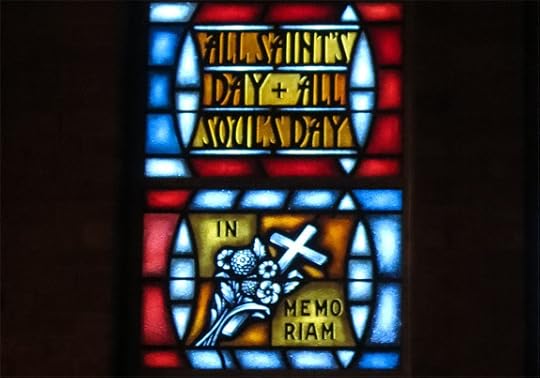
Church
of the Holy Family (Grand Blanc, Michigan) - interior, stained glass,
All Saints' Day, All Souls' Day, Holy Rosary, Christ the King
(Nheyob/Wikimedia Commons)
To Trace All Souls Day | Fr. Brian Van Hove, S.J. | CWR Blog
All Souls Day has to do with the mystery of charity, that divine love overcomes everything, even death
As Cardinal Joseph Ratzinger once said so well, one major difference between Protestants and Catholics is that Catholics pray for the dead:
"My view is that if Purgatory did not exist, we should have to invent it." Why?
"Because few things are as immediate, as human
and as widespread—at all times and in all cultures—as prayer for one"s own departed dear ones." Calvin, the Reformer of Geneva, had a woman whipped
because she was discovered praying at the grave of herson and hence was guilty, according to Calvin, of superstition". "In theory, the Reformation
refuses to accept Purgatory, and consequently it also rejects prayer for the departed. In fact German Lutherans at least have returned to it in
practice and have found considerable theological justification for it. Praying for one's departed loved ones is a far too immediate urge to be
suppressed; it is a most beautiful manifestation of solidarity, love and assistance, reaching beyond the barrier of death. The happiness or
unhappiness of a person dear to me, who has now crossed to the other shore, depends in part on whether I remember or forget him; he does not stop
needing my love." [1]
Catholics are not the only ones who pray for the dead. The custom is also a Jewish one, and Catholics traditionally
drew upon the following text from the Jewish Scriptures, in addition to some New Testament passages, to justify their belief:
Then Judas
assembled his army and went to the city of Adulam. As the seventh day was coming on, they purified themselves according to the custom, and they kept
the sabbath there. On the next day, as by that time it had become necessary, Judas and his men went to take up the bodies of the fallen and to bring
them back to lie with their kinsmen in the sepulchres of their fathers. Then under the tunic of every one of the dead they found sacred tokens of the
idols of Jamnia, which the law forbids the Jews to wear. And it became clear to all that this was why these men had fallen. So they all blessed the
ways of the Lord, the righteous Judge, who reveals the things that are hidden; and they turned to prayer, beseeching that the sin which had been
committed might be wholly blotted out. And the noble Judas exhorted the people to keep themselves free from sin, for they had seen with their own eyes
what had happened because of the sin of those who had fallen. He also took up a collection, man by man, to the amount of two thousand drachmas of
silver, and sent it to Jerusalem to provide for a sin offering. In doing this he acted very well and honourably, taking account of the resurrection.
For if he were not expecting that those who had fallen would rise again, it would have been superfluous and foolish to pray for the dead. But if he
was looking to the splendid reward that is laid up for those who fall asleep in godliness, it was a holy and pious thought. Therefore he made
atonement for the dead, that they might be delivered from their sin. [2]
Besides the Jews, many ancient peoples also prayed for the
deceased. Some societies, such as that of ancient Egypt, were actually "funereal" and built around the practice. [3] The urge to do so is deep in the
human spirit which rebels against the concept of annihilation after death. Although there is some evidence for a Christian liturgical feast akin to
our All Souls Day as early as the fourth century, the Church was slow to introduce such a festival because of the persistence, in Europe, of more
ancient pagan rituals for the dead. In fact, the Protestant reaction to praying for the dead may be based more on these survivals and a deformed piety
from pre-Christian times than on the true Catholic doctrine as expressed by either the Western or the Eastern Church. The doctrine of purgatory,
rightly understood as praying for the dead, should never give offense to anyone who professes faith in Christ.
When we discuss the Feast of All Souls,
we look at a liturgical commemoration which pre-dated doctrinal formulation itself, since the Church often clarifies only that which is being
undermined or threatened.
October 31, 2013
Souls, Saints, and the "Permanent Things"
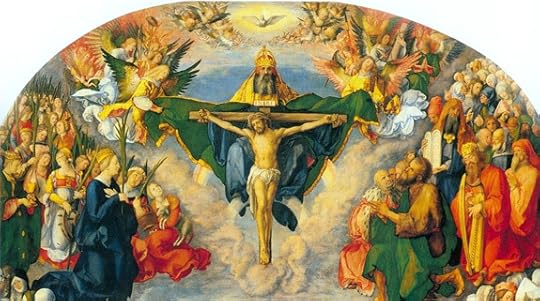
All Saints picture ("Allerheiligenbild") by Albrecht Durer (1511)
Souls, Saints, and the "Permanent Things" | Fr. James V. Schall, S.J. | CWR
We are in danger of losing contact with the dead in our families and in our culture
I.
A seminary in Ireland,
now closed, was dedicated to the training of priests for foreign missions, for
strange places such as California. It was called "All Hallows", that is, All
Saints, November 1. Oxford University in England has a college called "All
Souls," November 2. Taken together, all saints and all souls are designed to
cover all of the final combinations of the human race except all the still
living, who are waiting to join one or the other of the previous categories.
Come to think of it, all "all saints" all have souls. What are left are all
lost souls who, presumably, have already also made their final choices about
how they are permanently to be.
Most of my relatives are buried in the Catholic Cemetery
just at the edge of Pocahontas, a small county seat in rural northwest Iowa. My
mother's grandparents, my grandparents on both sides of my family, my mother
herself, and, I believe, all but one of her thirteen brothers and sisters are
buried in this neat cemetery. Two of my father's brothers are also there; his
other brother is a few miles east in the cemetery in Clare. Two of my father's
four sisters are buried there, as well as numerous cousins and their families,
though many are scattered in later years. My own father is buried in the
cemetery in Santa Clara, and my brother in the cemetery in Spokane.
On the Second of November, many families, especially in small
towns, decorate the graves with flowers, have Masses or prayers said for their
deceased relatives, and in general remember them. In modern cities, I think, we
are in danger of losing contact with the dead in our families and in our
culture. Families move. Cremation changes things. There are so many of us. We
do not have to be superstitious, of course. We believe in the immortality of
the soul and the resurrection of the body. Our contact with cemeteries is
designed to recall our very mortality, but also to remind us of what we hold
about death and its place in our lives.
As we get older, we find that many
more of our immediate family are dead than alive. We find friends gone. Such is
our lot. To wish it otherwise, while not a totally unhealthy exercise, needs to
be understood clearly. It is given unto every man once to die, thence the
judgment, as it says in the Book of Maccabees. Death has become a hospital, not
a home, thing. The dead body is a source of parts, to be somehow passed on to
others. We think almost exclusively of the living, not of the dead.
We celebrate lives at funerals. We
do not worry about souls and their fates. The elderly are a problem, even a
social and political problem, not sources of wisdom. Cemeteries are often
desired for the land they take up. Laws exist about how long cemeteries are to
be kept intact. We still notice that many Latino and Asian families somehow
take care of their own elderly at home, whereas with others this care is often
passed on to various institutions and specialists. This may not be all bad, but
we should reflect on it.
II.
Belloc's wonderful book, The
Four Men, describes a walk he took in the
English county of Sussex, from October 29 till All Souls' Day, 1902. As the
four walkers reach the end of their walk, the old man, who, like the other
three walkers, is Belloc himself, makes the following memorable farewell
reflection:
Carl E. Olson's Blog
- Carl E. Olson's profile
- 20 followers


